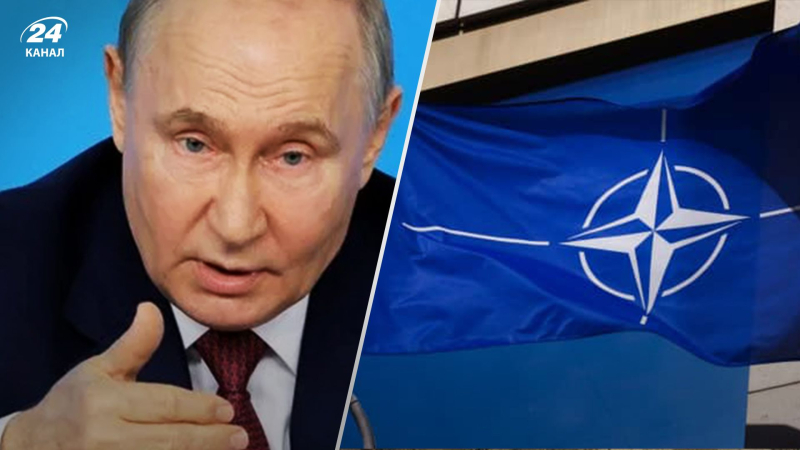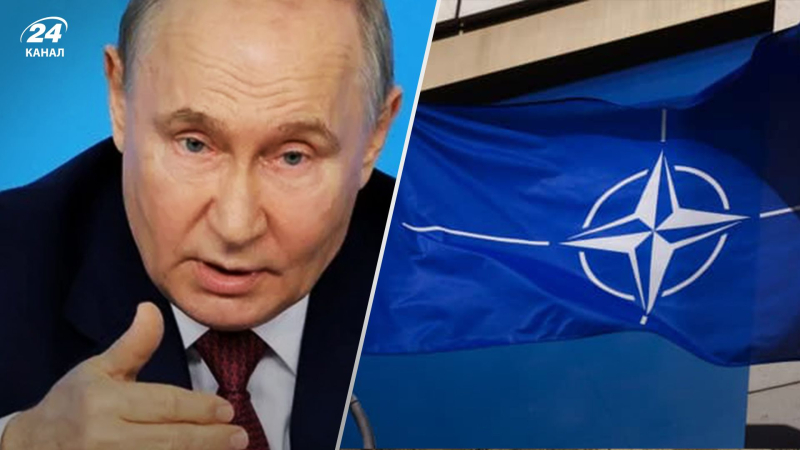Putin’s hybrid war: Russia has opened a second front on the border with NATO, – Bloomberg Sofia Rozhik Putin is waging a hybrid war on the eastern border with NATO/Collage 24 Channel Putin has opened a second hybrid war front on NATO's eastern border, conducting destabilizing operations in the Baltic Sea region. The Alliance seems to recognize that despite their readiness for this, they remain one step behind. On what Russia is now Finnish President Alexander Stubb, in particular, is waging two wars: one is a kinetic, conventional war in Ukraine, and the other is a hybrid war in the West with the aim of shaking the sense of security of these countries. The Russian Foreign Ministry, of course, does not comment on its activities. The situation on the Russian-Estonian border in Narva is currently tense. There, at the end of May, at midnight, several masked Russian border guards were removing orange navigation aids on the river that separates Estonia and the NATO area from Russia. Estonia took this as a signal to the countries the Baltics and the West in general. This incident was considered a provocation and destabilization of countries that share a 3,550-kilometer border with Russia and its ally Belarus. Finland, Estonia, Latvia , Lithuania and Poland share a border with Russia that stretches over 2,300 kilometers; add 1,250 kilometers shared with Belarus, and this is more than the US-Mexico border, writes Bloomberg. They believe that this reality is increasingly turning the Baltic region into a second front in the conflict between the West and Moscow. “These episodes tend to fall short of conventional attacks that could provoke a collective NATO response, and the frequency of these episodes has increased since Russia launched a full-scale war against Ukraine in early 2022,” the publication notes. In general, Russia resorts to sending groups of migrants to storm borders, jamming GPS signals, and recruiting criminals for minor sabotage. Despite this, the West plans to strengthen and modernize the eastern border at a cost of $3.5 billion and has asked to include Russian hybrid attacks on the agenda at the NATO summit, which will be held July 9 – 11. “In the past few months alone, Finland and Sweden have experienced airspace violations, several commercial planes have been prevented from landing at small airports due to global positioning system interference, and Poland has detained people for possible domestic sabotage activities that were supported by Russia. European Union “, writes Bloomberg. The Kremlin has also tried to mobilize Russian-speaking minorities in Estonia and Latvia to sow internal divisions, and in Poland it has focused on stoking tensions between locals and a large number of Ukrainians who sought refuge from the war. In addition, Moscow regularly calls the Baltic countries warmongers and Russophobes, and also attracts bots to send spam on social networks with harmful content . At first, the language errors in their disinformation texts were too obvious, but the advent of artificial intelligence has complicated the problem. There are no battle lines in this. “The whole of Europe is now in a state of war,” noted Finnish Foreign Minister Elina Valtonen. 
Russian hybrid warfare will be discussed at the NATO Summit
Putin's hybrid war: Russia has opened a second front on the border with NATO – Bloomberg
Putin’s hybrid war: Russia has opened a second front on the border with NATO, – Bloomberg Sofia Rozhik Putin is waging a hybrid war on the eastern border with NATO/Collage 24 Channel Putin has opened a second hybrid war front on NATO's eastern border, conducting destabilizing operations in the Baltic Sea region. The Alliance seems to recognize that despite their readiness for this, they remain one step behind. On what Russia is now Finnish President Alexander Stubb, in particular, is waging two wars: one is a kinetic, conventional war in Ukraine, and the other is a hybrid war in the West with the aim of shaking the sense of security of these countries. The Russian Foreign Ministry, of course, does not comment on its activities. The situation on the Russian-Estonian border in Narva is currently tense. There, at the end of May, at midnight, several masked Russian border guards were removing orange navigation aids on the river that separates Estonia and the NATO area from Russia. Estonia took this as a signal to the countries the Baltics and the West in general. This incident was considered a provocation and destabilization of countries that share a 3,550-kilometer border with Russia and its ally Belarus. Finland, Estonia, Latvia , Lithuania and Poland share a border with Russia that stretches over 2,300 kilometers; add 1,250 kilometers shared with Belarus, and this is more than the US-Mexico border, writes Bloomberg. They believe that this reality is increasingly turning the Baltic region into a second front in the conflict between the West and Moscow. “These episodes, as a rule, do not reach the level of conventional attacks that could provoke a collective NATO response, the frequency of these episodes has increased since Russia launched a full-scale war against Ukraine in early 2022,” the publication notes. In general, Russia resorts to sending groups of migrants to storm borders, jamming GPS signals, and recruiting criminals for minor sabotage. Despite this, the West plans a $3.5 billion fortification and modernization of the eastern border and has asked to put Russian hybrid attacks on the agenda of the NATO summit scheduled for July 9-11. “In the past few months alone, Finland and Sweden have suffered airspace violations, several commercial planes have been prevented from landing at small airports by interference with the global positioning system, and Poland has detained people for alleged acts of sabotage inside the country that were backed by Russia. The European Union,” writes Bloomberg. The Kremlin has also tried to mobilize Russian-speaking minorities in Estonia and Latvia to sow internal discord, and in Poland it has focused on stoking tensions between local residents and the large number of Ukrainians who have sought refuge from the war. In addition Moscow regularly labels the Baltic states as warmongers and Russophobes, and employs bots to spam social media with harmful content. At first, the language errors in their disinformation texts were too obvious, but the advent of artificial intelligence has complicated the problem. There is no front line here. All of Europe is now at war, said Finnish Foreign Minister Elina Valtonen.
Russian hybrid warfare will be discussed at the NATO Summit


